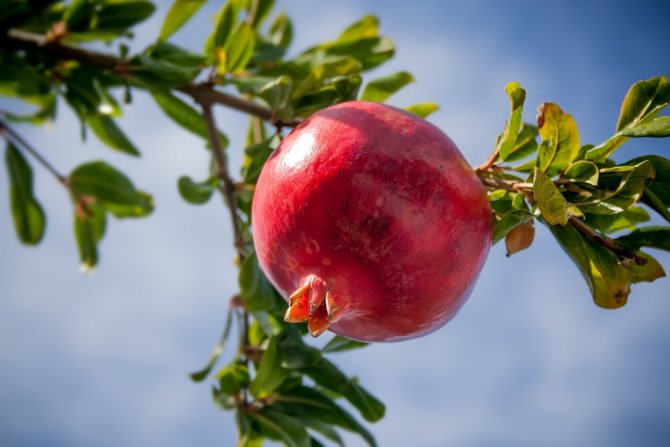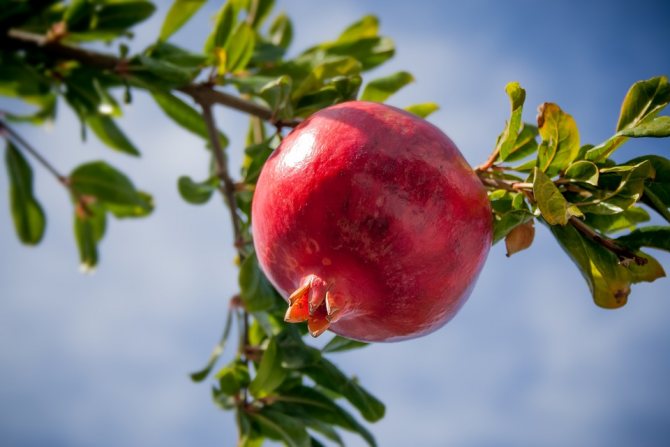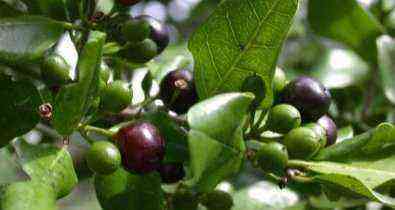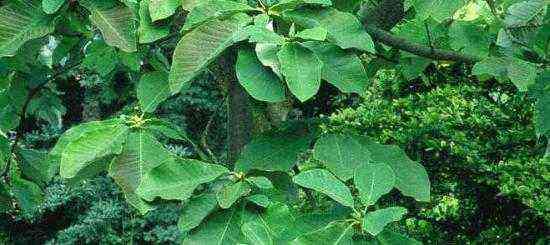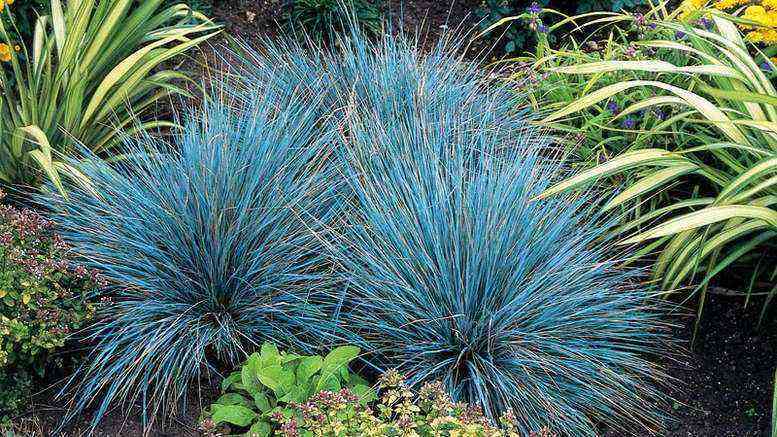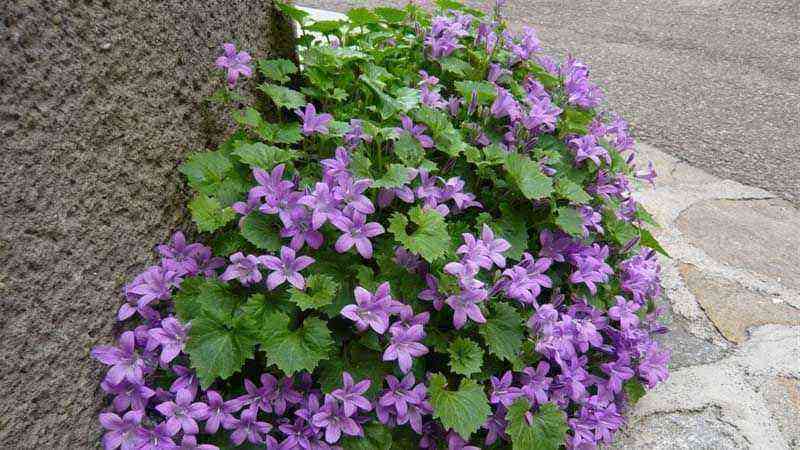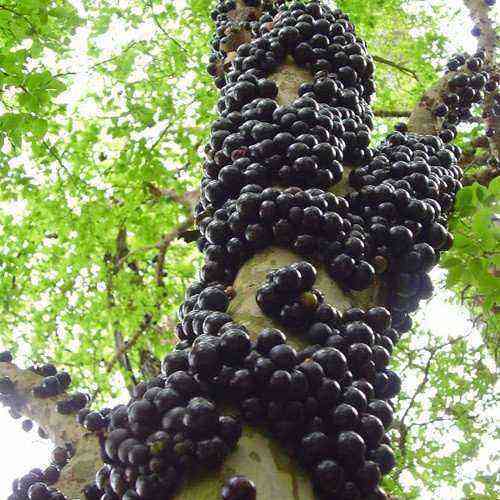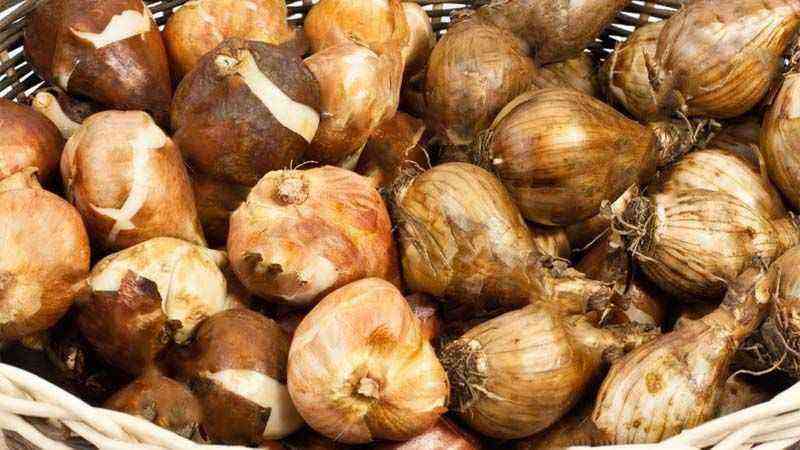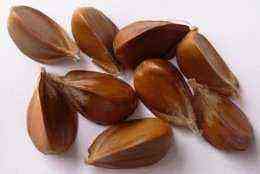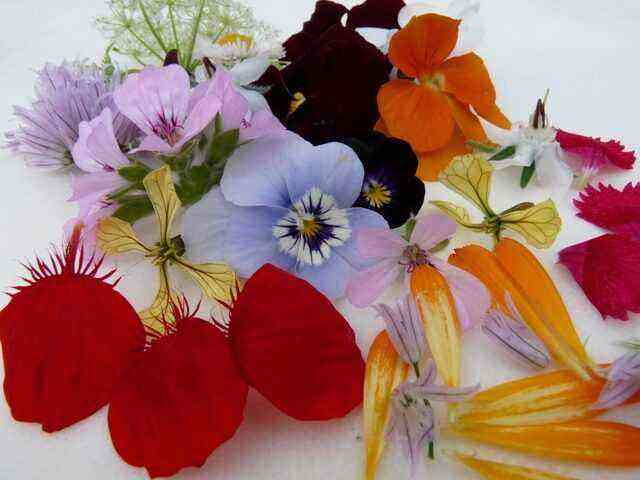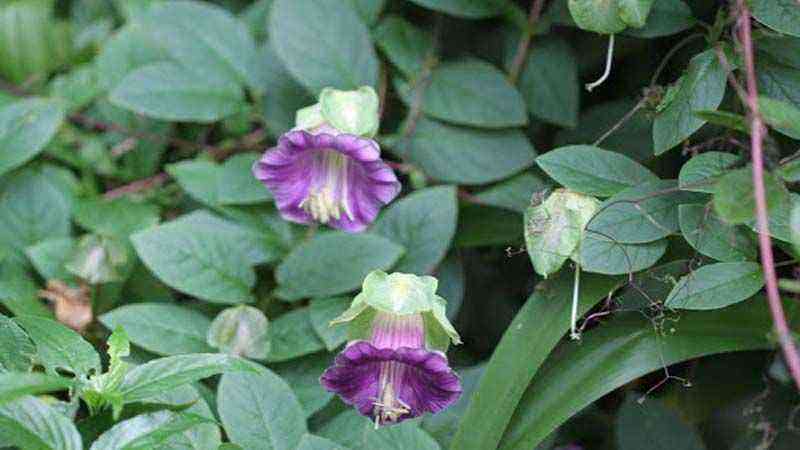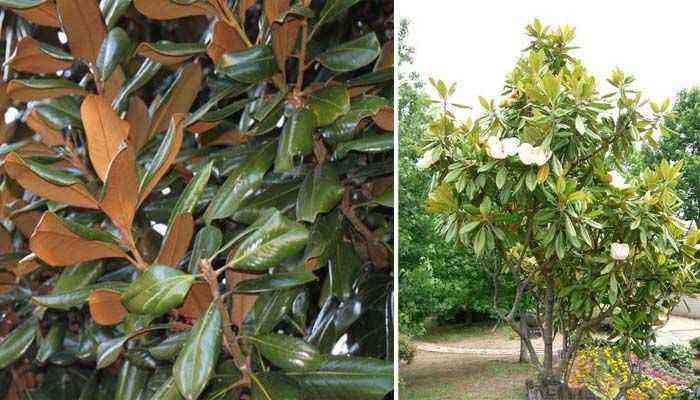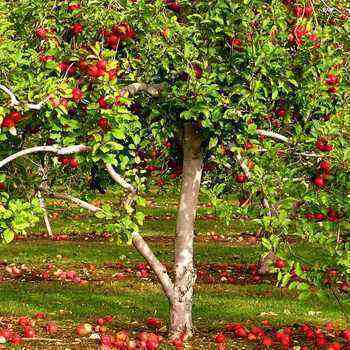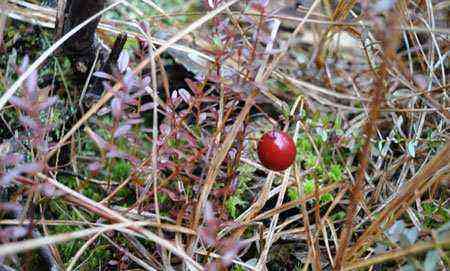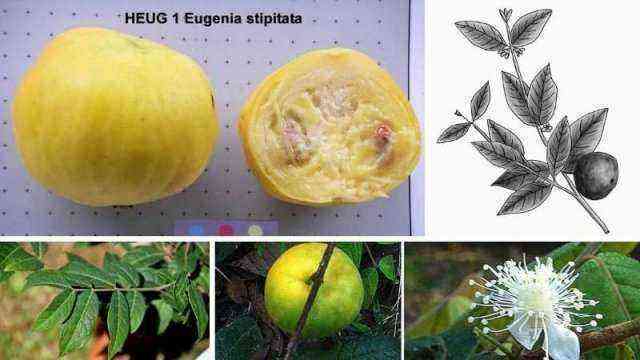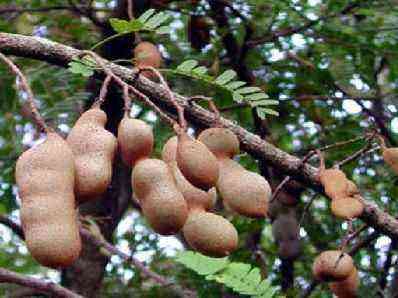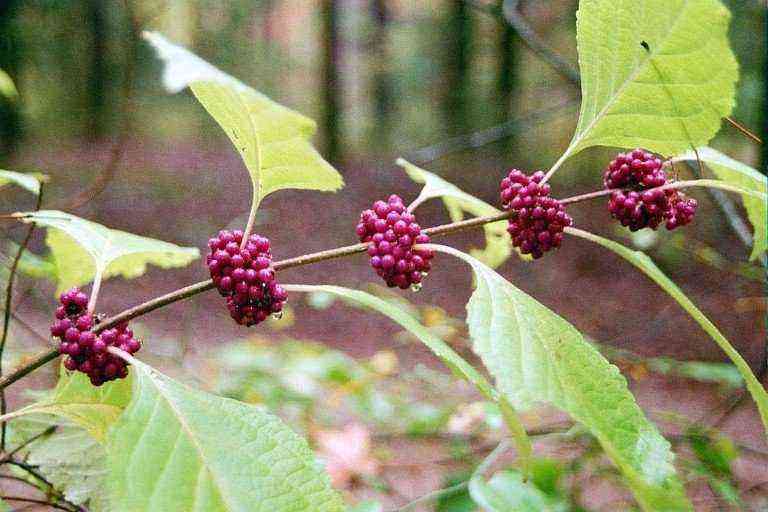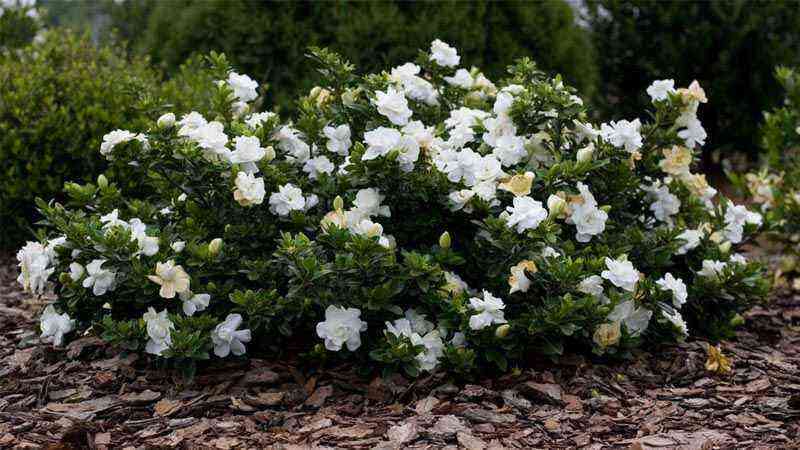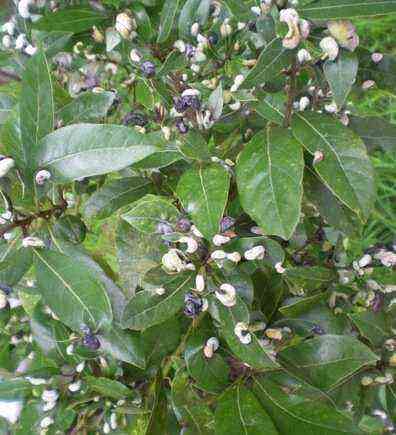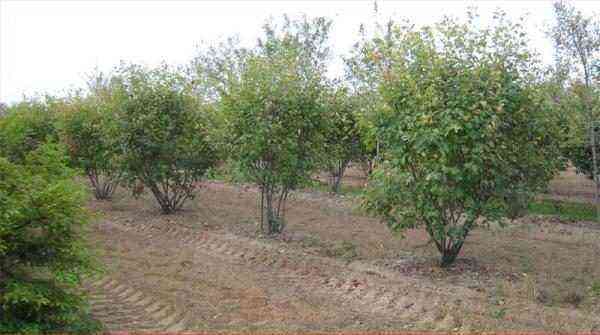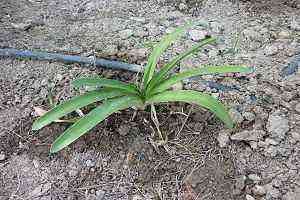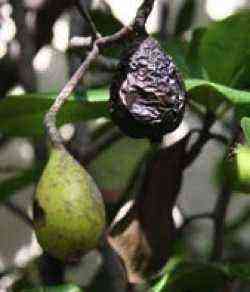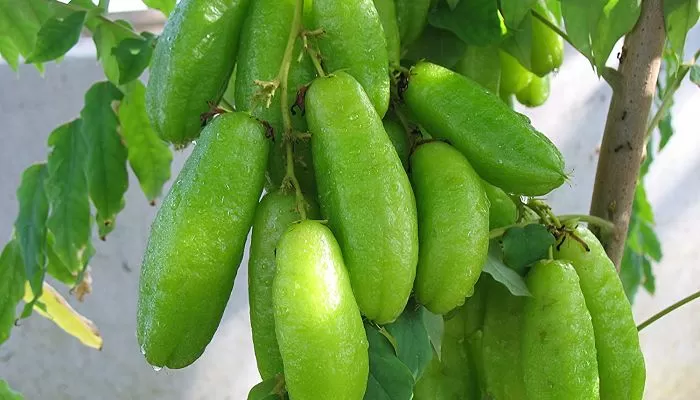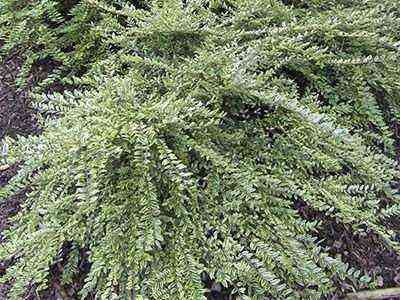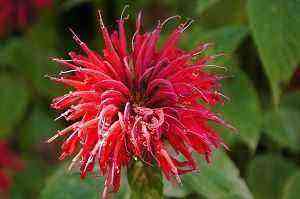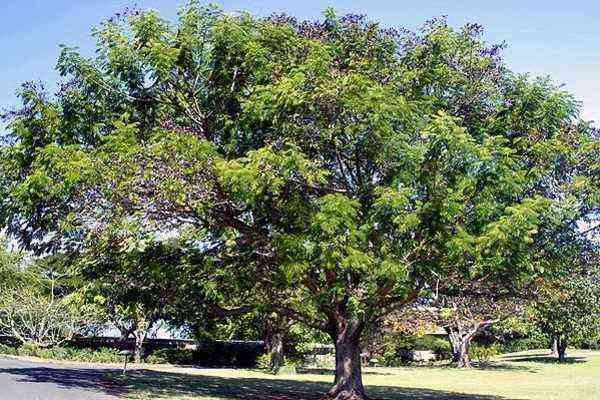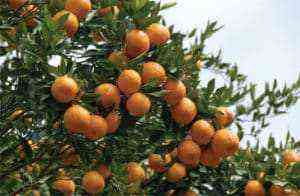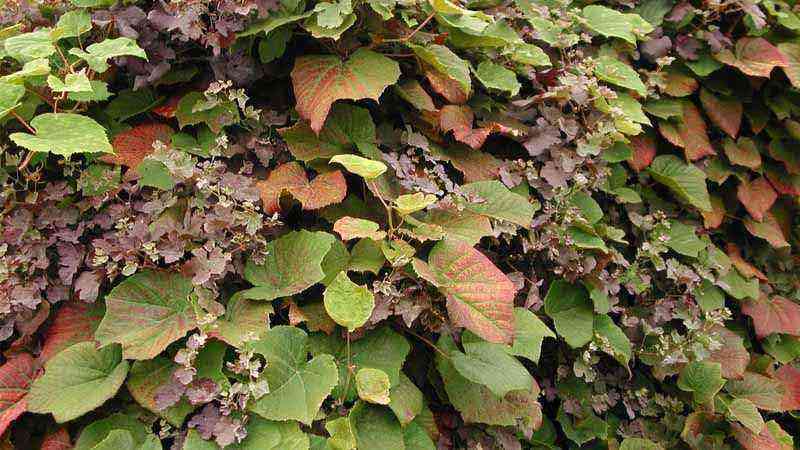The pomegranate is truly a versatile fruit. It can be found in the culinary recipes of different nations. He pomegranate is used not only fresh.
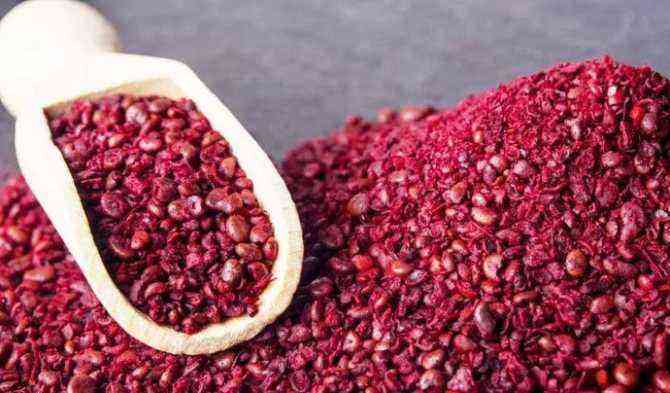

The dry pomegranate seasoning gives the dishes a refined aroma and pleasant aftertaste. Not only grains, but also crusts have found application for the manufacture of seasonings. They are considered even more useful. The dry mixture is used to prepare various sauces.
Cooking dried pomegranate
For dry seasoning, use pomegranate seeds and dry pomegranate peels. At home, the grains are dried in the sun. After a week of aging, the seeds become more saturated in color. The soft shell loses moisture and dries up. Then the pomegranate seeds must be fried and ground into powder.
Modern household appliances can speed up the process. In food production, lines for drying fruits and vegetables are used. For home cooking, special drying mini-ovens are produced.
The spice made from dried seeds is called anardana in Vedic cuisine. Pomegranate peels are dried and crushed. It is not necessary to neglect the peel, as it gives a spicy aroma, and surpasses grains in usefulness.
The composition and calorie content of anardana
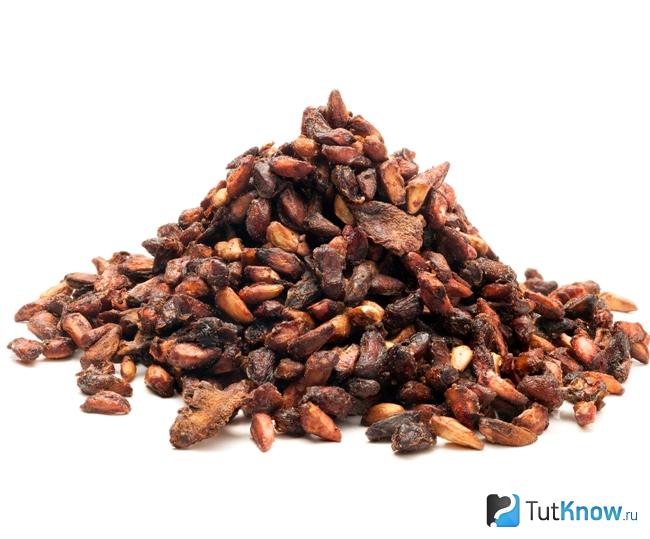

The energy value and vitamin and mineral composition of dried pomegranate seeds depend on the plant variety, growing conditions, region, weather conditions, type and quality of soil. Changes are minor when using dried pomegranate spice for culinary purposes.
The seeds of a subtropical fruit are used not only for food purposes, but also for medical purposes. They are introduced into a medicinal product: the trade name is “Pachak Anardana Goli”, therefore, chemical studies are carried out for each batch individually.
The calorie content of anardana is 58.75-65 kcal per 100 g, of which:
- Proteins – 0.83 g;
- Fat – 0,2 g;
- Carbohydrates – 13.2-22 g.
Among vitamins, ascorbic acid predominates, but also a high amount of niacin, tocopherol, retinol, choline, thiamine, pyridoxine, niacin, riboflavin. Among the mineral components are: calcium, potassium, sodium, iron, phosphorus, nitrogen, iodine, selenium, cobalt.
The most valuable components are phytocompounds resembling the steroid hormone estradiol in structure and effect on the human body; and anthocyanins, which have a pronounced antioxidant effect.
Anardana contains other equally useful substances: phenolic compounds, starch, glucose, fructose, pectin in small quantities, tannins and organic acids – malic, citric, tartaric. The stickiness of pomegranate seeds, even with prolonged drying, remains due to the high content of oil (in fresh grains it is up to 76% relative to other chemical compounds).
One of the components of pomegranate oil is thioctic acid, which has pronounced regenerative properties, accelerates metabolic processes, lowers blood sugar and accelerates the burning of fat.
- See also the composition and calorie content of pomegranate jam
Cooking tips
- rinse the selected fruits thoroughly;
- dry with a towel or napkins;
- cut the fruits and separate the scattering of grains from the peel;
- remove white fibers;
- dry the grains and chopped peel.
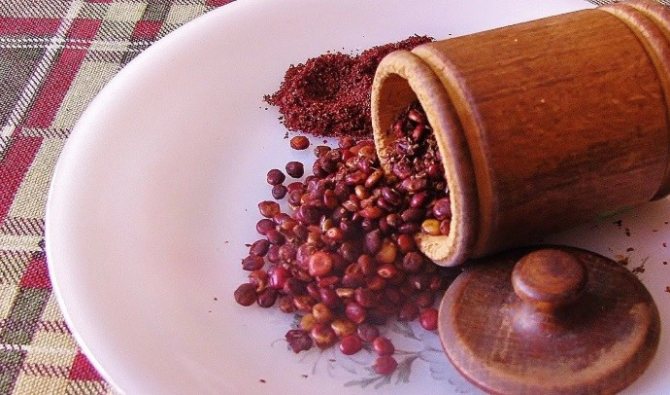

Important! The seasoning is best kept in a glass container in a dark place. For storage, bags made of thick paper are suitable. You can grind it into powder using a regular coffee grinder.
How to choose a grenade
A number of external characteristics help determine the quality of the pomegranate. Indicators to look for when choosing a fruit:
- the peel is not damaged;
- the surface of the fruit is evenly dense;
- unripe pomegranate is always lighter than ripe;
- the color is bright without an admixture of green near the place where the flower was;
- dried peel;
- a grainy pattern is slightly visible on the surface.
The ripe fruit is characterized by an incredible sweet and sour taste.
The quality of the fruit affects not only the taste characteristics, but also its beneficial properties. Careful choice and observation will help you not to waste your money.
Use in cooking
Dried pomegranate seasoning is the queen of Asian and Caucasian cuisine.
- Armenian cuisine uses a seasoning to make lamb stew. The recipe even contains a dish called “prov-float”, which means “pilaf with pomegranate.”
- In the Caucasian recipe, any dish with lamb meat is seasoned with a mixture of “baharat”. Along with other spices, it includes dried pomegranate.
- The indigenous people of the East cannot imagine a barbecue marinade without the addition of this wonderful powder. It makes the meat softer and softer and gives the dish a spicy flavor.
- In Cyprus, goliva is prepared with dried pomegranate seeds. The dish is prepared on the days of commemoration of deceased relatives.
- Hindus season salads, tortillas and vegetables with sauce.
Seasoning is an ingredient in sauces. The taste is sweet and sour, slightly astringent. Such sauces are served with fatty or spicy meat and poultry.
The dry mixture is good for making drinks, stewed fruit and jelly. Confectioners use it. In Asia and the Caucasus, they serve marshmallow and jam with the addition of seasoning.


How to prepare and use pomegranate seasoning
The pomegranate is truly a versatile fruit. It can be found in the culinary recipes of different nations. He pomegranate is used not only fresh.
The dry pomegranate seasoning gives the dishes a refined aroma and pleasant aftertaste. Not only grains, but also crusts have found application for the manufacture of seasonings. They are considered even more useful. The dry mixture is used to prepare various sauces.
Narsharab Sauce
Azerbaijanis add dry pomegranate to narsharab sauce. From the powder, a sauce is prepared in water with a consistency similar to heavy cream. Salt and sugar are added to it to taste. Season with basil, coriander, black, white and red peppers, cinnamon and bay leaves. Everything is boiled down to the thickness of sour cream.
Narsharab is served with all types of meat and fish. The dishes turn out to be spicy, Even the toughest meat fibers become tender and crumbly. For this reason, narsharab is ideal as a marinade. Important! It is not recommended to keep the meat for more than 6-7 hours!
This sauce makes a great addition to beans and any stew. Even without the addition of meat, such dishes are able to satisfy the most refined taste.
The narsharab recipe has long spread beyond Azerbaijan. In many dishes, it has become an alternative to soy sauce. Well, Azerbaijanis enjoy eating fresh bread, dipping it into a bowl with narsharab, and enjoy the original taste.
Pomegranate seasoning salt
Pomegranate seasoning salt is prepared on the basis of pomegranate salt and peel powder. Caucasian spices are added to it – marjoram, tarragon, mint, rosemary, thyme. A small portion of dried garlic will add spice. This mixture not only adds flavor to food, but is also beneficial for the body.
The combination of spices in pomegranate salt is ideal for preparing seasonings for any meat and vegetables. Pilaf and fish, kharcho soup, marinades very quickly absorb salt and acquire a refined spicy taste.
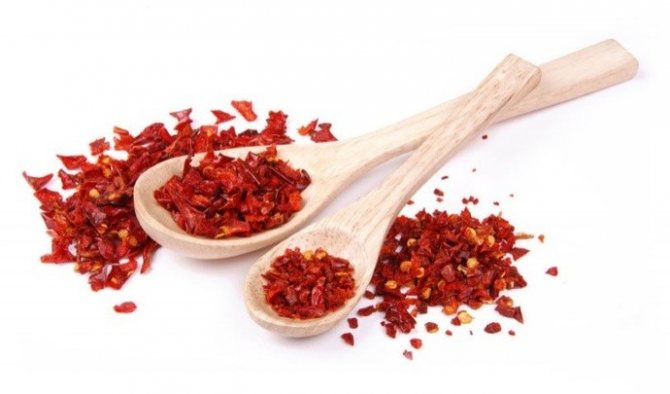
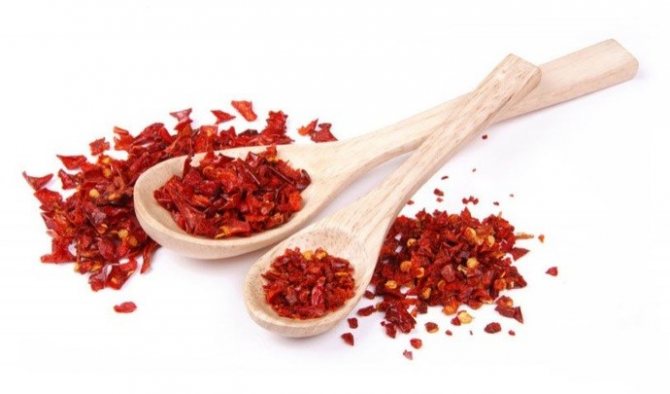
Aromatic salt “Fairy Tale”

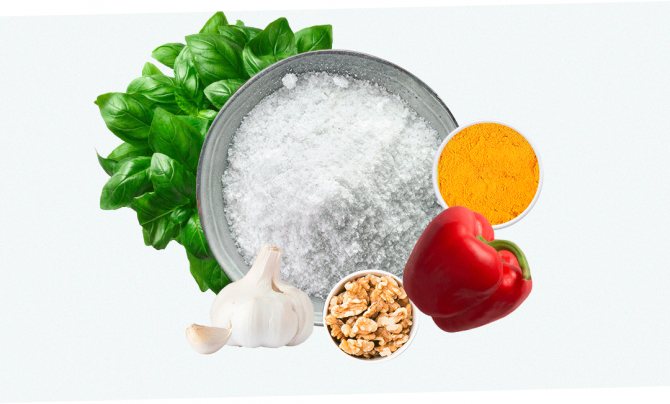
Another aromatic mix, based on 4 types of salts: nut, garlic, Adyghe and Svan. It is unlikely that you will see such salt in a regular store. Its base is varied and healthy, here you will find the best that nature has given us: walnut, turmeric, coriander, sweet paprika, basil, garlic, mountain cumin, blue fenugreek and Imeretian saffron. By adding this aromatic salt to your spice collection, you can strengthen your immune system, facilitate digestion and speed up metabolism, cleanse your body of toxins and even improve your memory.
What to cook: Skazka salt can be used to flavor all everyday meals. Feel free to add it to soups, gravies, salads, marinades, pilaf, meat, fish or vegetable dishes. It is better to store salt in the refrigerator so that it does not lose its flavor.
Order fragrant salt
Interesting recipes
The following recipes will tell you when and how to use dried pomegranate seasoning.
Infusion on dried pomegranate
If a person has problems with the digestive tract, then it is shown to use the remedy for a therapeutic purpose. A rich infusion is prepared from it. It will take half a liter per day. A daily portion is prepared daily in the morning. Required:
- 30 g of a highly crushed mixture;
- half a liter of boiling water.
The infusion is left under a tight lid for half an hour. You need to drink half a glass during the day. After dinner, they drink the last portion and do not take any more food. Duration of admission is 7-10 days.
The same infusion can be used to gargle with tonsillitis and inflammation.
Duck with pomegranate sauce
The recipe is considered festive. Required:
Drink contraindications
A drink made from parts of a pomegranate tree is a fairly safe product. However, he also has contraindications.
| Diseases / features of the body | Possibility of including pomegranate tea in the diet | Note |
| Diseases of the gastrointestinal tract (peptic ulcer, gastritis, acidity) | Contraindicated | Explained by the high content of acids in pomegranate |
| Rectal problems (hemorrhoids, constipation, integrity problems) | Carefully | The possibility of including tea in the diet is determined by the individual reaction of the body to the astringent property of pomegranate. |
| Children under one year old | Contraindicated | |
| Pregnant women and nursing mothers | In agreement with the gynecologist | |
| Individual intolerance | Carefully | Possibility is determined by the ratio “required effect – possible harm” based on the individual reaction to the product |
The product should be consumed in moderation. Excessive volume can cause deterioration of the teeth or nausea and heartburn.
Pure pomegranate juice negatively affects the condition of the tooth enamel. This is manifested in its destruction. In order to reduce this effect, it should be diluted with water or rinsed thoroughly after use.
Fruit Features
Commonly referred to as a fruit, pomegranate, however, has been scientifically proven to be a berry. However, the pomegranate is more understood as a fruit, which is why people still refer to it as a fruit. Everyone knows about the beneficial properties of pomegranate since childhood. It is full of various vitamins and minerals, has a juicy pulp, and you can get a healthy refreshing juice from it.
Despite the great benefits of this plant, it is not particularly popular, since not all fruit lovers like to pick out seeds. Meanwhile, for example, in India, it is the seeds that are considered the most valuable component of the pomegranate. In the northern part of this country, pomegranate seeds are dried and added as a spice to vegetable dishes.
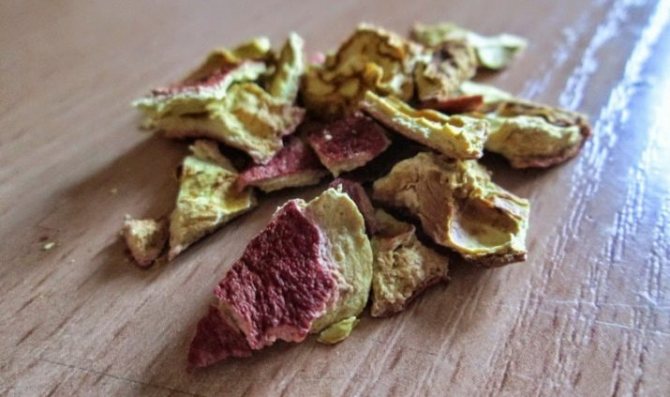

Sweet and sour, slightly astringent seasoning perfectly complements spicy recipes, various sauces, meat, gives a cooling flavor to the taste. When preparing the seeds, they are dried in the sun for a week, after which the seeds acquire a richer color and the pulp shrinks. Then the seeds are fried, crushed to a powder and the product is ready for use. The name of the dried seed spice is anardana.
When searching for this product in a Russian store, difficulties may arise, but you can find this spice in the departments of oriental cuisine.


If the seeds of this fruit-berry, used in the basis of the seasoning, can somehow be visually presented as a decoration for a dish, then dried pomegranate peels, which can also be eaten, will cause bewilderment among many. Usually, the dense, dry rind of the fruit is considered useless. It only complicates the process of purification, and yet this element contains a lot of benefits. Therefore, do not rush to throw out the peeled pomegranate peels. First, you should study their properties.

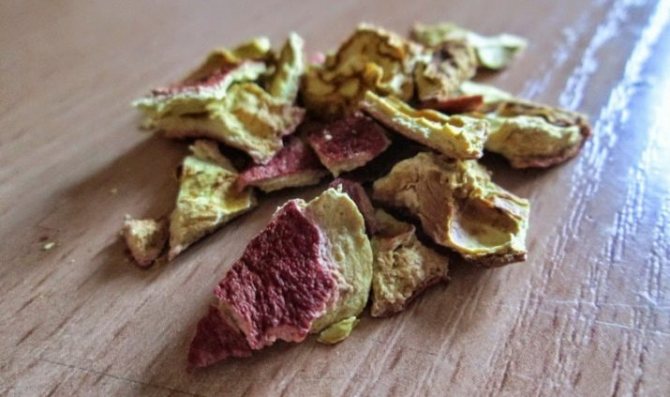
Composition of pomegranate tea
The composition of the fruit in question is characterized by many elements valuable for the human body. The latter include:
- boric acid;
- Apple acid;
- succinic acid;
- lemon acid;
- wine acid;
- oxalic acid;
- vitamin B1;
- vitamin B2;
- vitamin B6;
- vitamin B15;
- vitamin C;
- vitamin PP;
- iodine;
- copper;
- chromium;
- phosphorus;
- manganese;
- calcium;
- magnesium;
- potassium;
- 6 essential amino acids;
- 9 nonessential amino acids.
Turning into tea, this fruit transfers all these valuable elements to it.
Benefit and harm
Pomegranate grains and peels contain vitamins C, B6, B12, P, calcium, magnesium, iodine, iron and other trace elements, phytoncides, tannins, chloride salts. The benefits of pomegranate are manifested in the following:
- effectively eliminates thirst;
- provides the formation of red blood cells;
- increases hemoglobin;
- strengthens the immune system;
- has hemostatic properties;
- has a positive effect on the nervous system;
- improves blood formation.
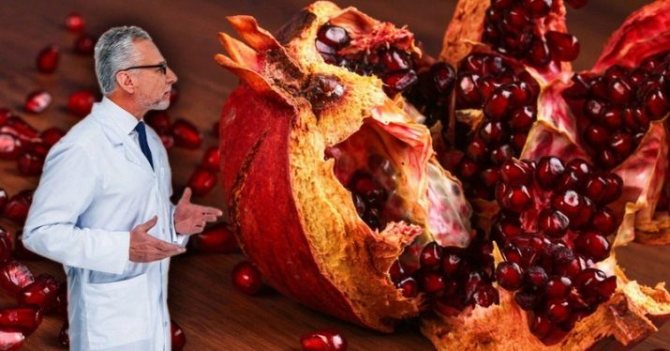
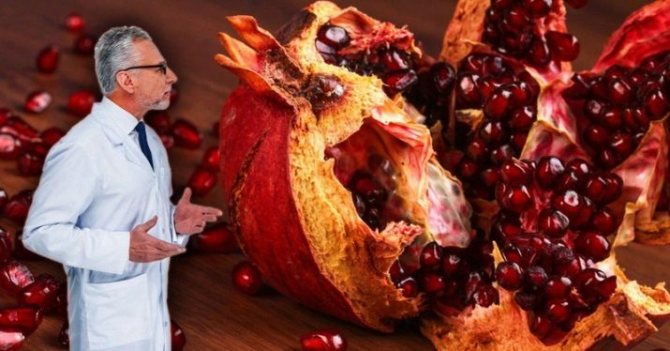
It is believed that children, whose menus regularly include pomegranates, are more intelligent than their peers. For the elderly, this fruit is also beneficial. Doctors recommend bringing grenades to patients who have survived surgery. This fruit contains ellagitannin, which is the prevention of breast cancer. Vitamin B12, contained in the plant, contributes to good male potency. An infusion of dried skins strengthens the man’s body, fills it with energy and tone.
Dried peel is suitable for treating indigestion, and is also an excellent remedy for fighting parasites, wounds and anemia.


Despite the benefits that pomegranate brings to the human body in any condition, there are contraindications for taking it, such as:
- allergy;
- pancreatitis;
- increased gastric acidity;
- diseases of the oral cavity;
- ulcers, constipation, gastritis;
- individual intolerance.
Useful properties of pomegranate
The modern name “pomegranate” for this unique fruit was stuck relatively recently. Previously, it was called the Carthaginian, Punic or pomegranate apple. Why “apple” is quite understandable: the fruits are similar to each other in their shape. The word “pomegranate” is literally translated from Latin as “grainy”. Indeed, the false pomegranate fruit consists of many small drupes, gathered together under a common shell.
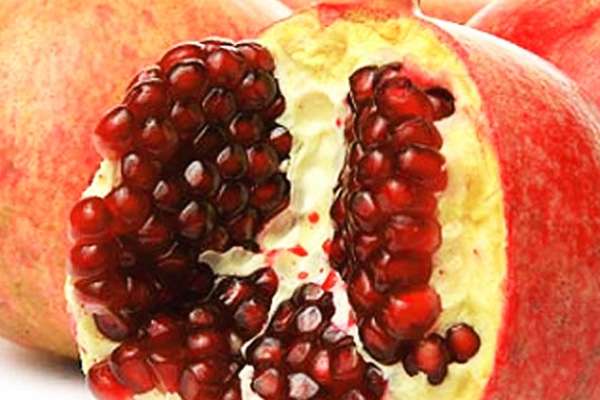
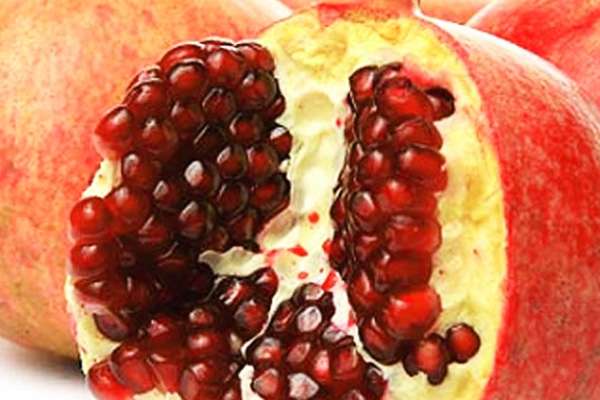
The benefits of pomegranate are truly amazing:
- Its main advantage is that it has a very positive effect on the vascular system, improves the quality and composition of blood, and helps the heart muscle work.
- Slightly tart concentrated pomegranate juice is an excellent remedy in the fight against sore throat and other diseases of the throat and mouth. Moreover, not only juice is useful in this regard, but also a decoction of pomegranate skins.
- If strawberries, bananas, melons are “forbidden fruit” for diabetics, then the taboo does not apply to pomegranates. On the contrary, their juice for them is like a medicine that lowers sugar levels and improves overall well-being.
- By the way, the pressure of the grenades also reduces.
- This fruit is also useful for those who work with radioactive elements or have been exposed to radiation as a result of the Chernobyl accident.
- A person who ate “something wrong” and got a digestive upset does not have to swallow activated charcoal in batches – it will be enough to eat a few pinches of dried pomegranate skins powder. Children are given pomegranate juice for the same purpose.
- With the help of crushed skins of this wonderful fruit, you can expel parasites from the body, as well as cleanse the skin of the face.
- Pomegranate seeds are also incredibly healthy: they help balance hormones.
For what use?
Pomegranate can rightfully be called a universal remedy for a variety of ailments. You can make spices, seasonings, juices, infusions from it, use it as a mask for the face and hair, and use it as compresses. The shell of a pomegranate can even act as a material for handicrafts.


Bean spice
The main use of pomegranate seeds is to prepare a seasoning for vegetables, legumes and meat dishes. In the East, this spice is not exotic, but in Russia this product is not yet very popular. Although it is in the barbecue season that such a spice will be very appropriate. It can be added to marinades, salad dressings, sauces for fried meat or poultry, and sprinkle with vegetable dishes.
Not so long ago, another novelty appeared in Russia – this is pomegranate salt. This seasoning is made by mixing pomegranate, garlic, nutmeg, ginger and other Caucasian spices. It is perfect for enhancing the taste and aroma of meat dishes, rice, salads, and baked vegetables.


To prepare an exotic spice, you can use the following steps:
- it is necessary to carefully collect all pomegranate seeds;
- distribute the grains on a baking sheet so that they do not come into contact with each other;
- put for a while in the oven, preheated to no more than +40 degrees;
- grind the dried seeds in the oven into powder using a coffee grinder.
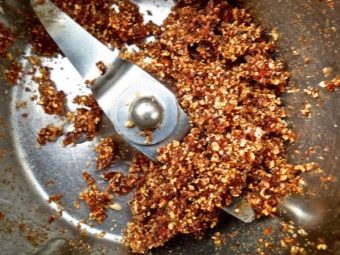

The seeds can also be dried in a vegetable dryer or simply left under a clean towel for seven days. You can find ready-made condiments in an Indian store, in the spice section, or order online – the cost of this product is quite affordable.
Water infusion of crusts
Pomegranate powder can also be obtained by drying the peel. In addition, the peel of the fruit is suitable for the preparation of medicinal decoctions and infusions that help fight inflammatory diseases, colds, and facilitate breathing. Pomegranate peels can be used to treat diarrhea, bleeding, to heal wounds and abrasions.
The peel is an effective remedy for burns and acne, because the peels are used to produce high-quality masks for the skin. Another property of the pomegranate shell is the ability to rid the body of worms.

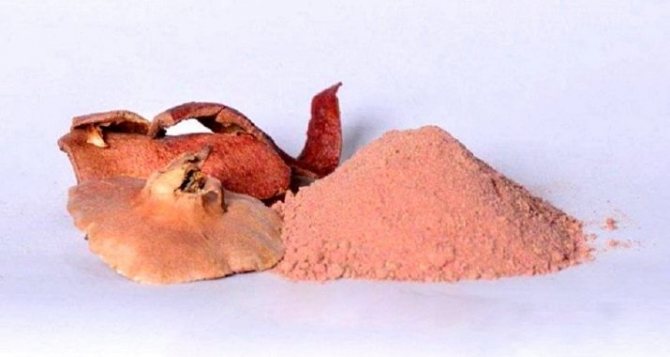
To dry a pomegranate, you need to do the following:
- rinse the peel thoroughly and dry with a paper towel;
- remove the white part from the crusts;
- dry the peel – this can be done naturally or using the oven;
- store the dried product in a dark glass container or paper bag;
- if you need a powder, you can grind the peel in a coffee grinder.
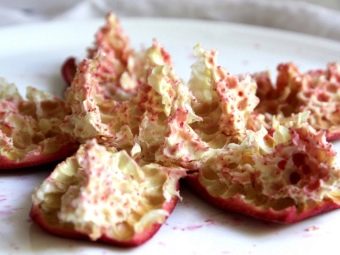
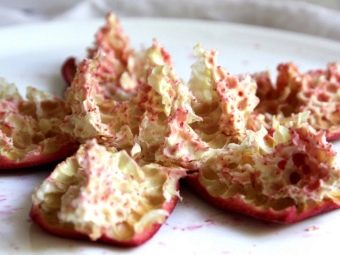
If you choose the natural way of drying the crusts, then you should spread the cut parts on a napkin, cover with gauze and leave for a week. It is necessary to move the crusts several times a day.
To prepare a universal pomegranate infusion, you need to follow these steps:
- Pour 10-12 dried crusts with 200 ml boiling water;
- close the lid and leave for half an hour.

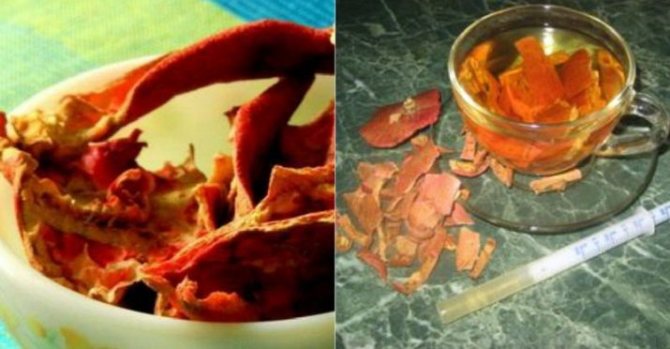
You should take about half of the resulting broth per day. This recipe has a beneficial effect in the treatment of ailments such as dysentery, salmonellosis, appendicitis, colds. Thus, having bought a sour pomegranate on the market, you should not rush to throw it away – it is recommended to collect the seeds and try to prepare an exclusive seasoning that will refresh and decorate any dish. In turn, infusions of dried pomegranate peels will provide health to the whole family for a long time.


For the beneficial properties of pomegranate, see the next video.
Sumac or sumac (from the Aramaic “Sumaqa” – red) is a burgundy spice popular in the East with a sour, slightly astringent taste, without any pronounced aroma.
Sumak gained the main popularity in Asian states with Jewish and Muslim cuisines. Due to its characteristic acidity, it is often used as lemon and cherry, pink or dark burgundy dye in various fish, meat and vegetable dishes.
Recipes of traditional medicine
The beneficial properties of pomegranate peels have been known in the countries of the East for a long time. In Europe, they learned about the possibilities of this fruit later, but today the pomegranate and its parts are widely used in folk medicine. The use of pomegranate peels is not limited to decoctions alone, the peel is used in the form of tinctures, powder, for brewing tea, and is often used in cosmetology.
All-purpose pomegranate tea
One of the most convenient uses for pomegranate peels is spiced tea. To prepare it, you need to brew tea, add the peel of the king of fruits, mint, finely chopped ginger or its powder. The drink is boiled for about a minute, removed from the heat and filtered. The resulting aromatic tea tones and strengthens the body’s immune capacity, improves the functioning of the digestive tract. A slice of lemon and honey will perfectly complement the beneficial effects of the drink.
Decoction for gastrointestinal disorders in children and adults
The antimicrobial and astringent properties of pomegranate peel make this remedy a real salvation for gastrointestinal disorders. In order to eliminate not only the consequences, but also the causes of diarrhea, it is effective to use a decoction of pomegranate peels.
For preparation, a teaspoon of powder is poured into 200 ml of boiled water and insisted for about two hours. An equally effective method is when water with pomegranate peel powder is simmered over low heat, then covered with a lid and filtered after an hour.
A decoction of pomegranate peel in the shortest possible time allows you to forget about the unpleasant sensations. Perhaps, in case of severe inflammation, you will need to re-drink the drink after 2-3 hours. For the treatment of gastrointestinal diseases, it is recommended to consume the broth for 3 days, evenly distributing the drink over 4 doses.
For the treatment of diarrhea in children, only fresh pomegranate peel is suitable. Accurate adherence to the recipe and dosages will help relieve the baby of intestinal disorders without possible harm to health.
A quarter of the pomegranate peel is thoroughly washed and 200 ml of boiling water is poured, after which it is infused for 40 minutes. Children under 12 months old are allowed no more than 15 ml, from one to 7 years old – 20-25 ml, children over 7 years old – 30-45 ml. The allowed amount must be divided into 3 doses.
Anthelminthic recipe
Infusion of pomegranate peels is effective in fighting parasites. Unlike a decoction, an infusion is prepared using warm, not hot, water. 50 grams of powder is poured into 400 ml of water and infused for about 6 hours. After this time, the drink is boiled over low heat until the volume changes by half. The infusion is cooled, filtered and drunk on an empty stomach. After a couple of hours, it is recommended to take a laxative or a cleansing enema.
Treatment of diseases of the oral cavity
Due to its powerful anti-inflammatory effect, pomegranate peels help in the treatment of mucous tissues in the oral cavity. Regular rinsing with warm broths helps to reduce bleeding gums and strengthen teeth, treats sore throat and cough. To prepare the product, 20 g of chopped pomegranate peels are poured into a glass of water, boiled over low heat and insisted for about an hour. It is recommended to use natural mouthwash several times a day for 7-10 days.
In case of burns
If the integrity of the skin is violated, for example, with burns and cuts, the pomegranate peel promotes accelerated healing. Firstly, the use of a decoction or infusion helps to increase immunity, which is especially important during the period of injury. Second, the product applied to the skin quickly relieves pain and prevents blistering. To treat a burn, you do not need a large number of pharmacological preparations, only the natural benefits of pomegranate peels.
The burnt area of the body is treated with fresh pomegranate juice diluted with water at a concentration of 1: 5. Then sprinkle the skin with powder and fix it with a bandage.
A tincture on the peel of a pomegranate is also effective, which dries and disinfects the burn. The rind of one pomegranate is poured with 100 ml of 40% alcohol and insisted for a week in a dark place inaccessible to sunlight. The resulting composition is diluted with 100 ml of glycerin and water, and the skin is treated with it several times a day.
Description of the plant
Sumac is made from ground red berries of a small shrub, which is often called “vinegar tree” for its specific taste properties. The berries ripen by the end of September.
Historians claim that even in ancient Rome, sumac was actively used in cooking as a substitute for vinegar or lemon juice.
Sumac seasoning is made from the berries of the sumac tree or, as it is also called, “vinegar tree”
Science knows about 250 species of sumak, which have settled in the vast territories of the Caucasus, the Middle East, Central and Central Asia, as well as the Mediterranean. But only a few varieties of sumac are considered truly edible and suitable as a spice.
The rest of the berries are so poisonous that even the leaves of the bush can leave a slight burn after touching.
Cinnamon: beneficial properties and contraindications, as well as recipes using spices in this article.
Seasoning for coffee
Coffee lovers add ground spices to a tart drink, not only to enrich its taste, but also to make it healthier. Cardamom is the most popular spice of the East, without which no cup of coffee is complete. The spice gives the drink light notes of eucalyptus and has a refreshing effect. Cinnamon is an ideal companion for sour Arabica, it creates a sweetish taste and a warm spicy aroma that soothes the nervous system. Ginger gives a mild pungency and improves bowel function, while burning cloves stimulates the brain.
What to cook: Seasoning for coffee is a multifunctional spice, the list of uses for which is not limited to the preparation of coffee drinks. You can enjoy the benefits of the seasoning by adding it to baked goods, desserts, puddings, cottage cheese and milk porridge.
Where is sumac added?
Sumac is practically universal and has found its successful application in different cultures – from cooking to canning.
Sumak is in the top five among the common oriental spices. So, in Iran and Turkey, it is customary to sprinkle rice snacks with ground sumac, and in Egypt, Syria and Lebanon, red berries are brewed and seasoned with the resulting broth for meat and vegetable dishes.
Sumac seasoning is used in the preparation of meat and vegetable dishes, added to salads, marinades and sauces
Sumac can be found in salads and marinades, it goes well with fish or poultry meat, it is often added to dishes where beans and cereals are used. Add some sumac to spice up pea soups or hummus (an oriental chickpea mash).
Another interesting dish where sumak is needed is yogurt or kefir sauce, which traditionally accompanies meat cooked on the grill or grill.
Pork chops or lamb chops will get an unusual spice when seasoned with sumac with caraway seeds or ground black pepper. Sometimes, for greater appetizing and taste, kebabs or pieces of pita bread are dipped directly into a bowl of spice.
Not a single kebab, shawarma or shish kebab can do without cilantro and onion rings generously sprinkled with bard spice. Marinated meat and barbecue steaks are generously seasoned with sumac before roasting.
The spheres of application of ruby spice do not end there, and sumak can be found in sausages, various fillings and minced meat, cheeses and even drinks or desserts. Fans of unusual flavors and culinary experiments are sure to add sumac to light breakfasts like sandwiches.
One of the advantages of sumach is its compatibility with most spices such as sesame, thyme, nutmeg, coriander, hot pepper, cumin, cloves and others.
Today sumak is widely used in the preparation of pilaf, boiled potatoes and bean soups. Fans of smoked lard will surely love the new taste of the delicacy combined with a slice of black bread and sumac.
Everything important to know about cardamom: useful properties and contraindications, you will find in this article.
What is cumin and where it is used read here.
LiveInternetLiveInternet
Source
Proper use of spices reduces negative effects and enhances positive ones. Which condiments are ideal for different foods? How to store spices correctly? The correct use of spices greatly enhances their positive properties – both taste and healing. Let’s talk about combining spices with certain product categories. POTATO DISHES are best cooked with coriander, turmeric and asafoetida. Add cumin, asafoetida, ginger, black pepper and coriander to the legumes. CABBAGE DISHES are especially tasty when combined with spices such as coriander, fennel, cumin and black mustard seed. For FATTY DISHES, saffron, ginger, shambhala, black mustard seeds, and turmeric are good choices. Hot milk usually contains cinnamon, cardamom or saffron. And in fermented milk products, you can put a little coriander, fennel, cinnamon or ginger. SWEET DISHES are traditionally prepared with the addition of ginger, cardamom, nutmeg, saffron and, of course, cinnamon. COFFEE AND TEA will have an unforgettable aroma when you add ginger, cinnamon or cardamom to them. For many dishes, the most effective way to use most spices is to heat them in oil. The spices are heated in hot oil (such as ghee or olive oil) in a separate skillet. At the same time, the oil acquires a unique taste and aroma of the corresponding spice and turns into a delicious buttery sauce. When preparing this sauce, it is very important not to overcook it. The grains are heated in a frying pan until they crackle, and the spices in powder should be kept on fire for just a few seconds. And most importantly, don’t forget that all spices require special storage, because are highly sensitive. The purchased package with seasoning should never be kept open. Spices should be stored in a dark place in a hermetically sealed container. Remember that after a year of storage, spices will inevitably lose most of their medicinal and taste properties. And if stored improperly, it happens much faster. The main difference between seasonings and spices It is that seasonings can be eaten as an independent dish, for example, spread on bread (sour cream, mayonnaise, tomato, apple, quince and barberry paste, ketchup, etc.) Seasonings make the dish more delicious , filling, nutritious and easier to digest. Rarely does anyone make a mistake with the use of seasonings, but here, as in any serious business, you must follow your own rules. Seasoning rules: • Sour-milk seasonings (sour cream, kefir, katyk, fermented baked milk, etc.) are applied to vegetable dishes, etc. • Vegetable sour spices (tomato, tkemali, barberry, pomegranate) and sweet and sour vegetable spices (quince, ketchup) – for meat dishes. • Salty vegetable (capers, olives) – for fish dishes. Seasonings should never be diluted with water. • Dairy spices are diluted with whey, and vegetable spices – with apple or plum juice. Spices are added to the dish to give it an aromatic shade and enhance the taste of the dish as a whole. • Spices can be used to neutralize foreign odors and to add new flavor to the dish. Spices can also be used to enhance the natural aroma and taste of the product. • Spices must be used with extreme caution, because a mistake in their use cannot be corrected. They are used in very small quantities and always at the very end of cooking, often after removing from heat or 5 minutes before cooking. • Spices must not be reheated or left in dishes for a long time. Therefore, it is advisable to eat dishes cooked with spices immediately, the next day they taste unpleasant. MINT There are many varieties of mint: lemon, curly, pubescent, peppermint. lavender, etc. In Israel cultivated varieties are grown – peppermint and lavender mint. • Peppermint is used for flavoring confectionery and in the medical industry. • Lavender mint is used as a condiment. It has a milder taste and smell and almost no bitterness. Mint leaves are used for making drinks, added to salads, fish, meat and vegetable dishes. Mint leaves are also good in sour milk soups and in legume dishes. Mint leaves can be dried and crushed. As such, they are added to marinade for meat, roast beef or veal, mashed potatoes and other potato dishes, and baked goods. CARDAMON In cooking, cardamom is actively added to pies, gingerbreads, strudels. Cardamom is one of the few spices that does not lose its aroma, even with prolonged heating. Cardamom is an essential ingredient in the famous Bedouin coffee. And, of course, cardamom enriches fish, rice, marinade and even minced meat dishes. Handle cardamom with extreme caution – it is a very strong seasoning. • Do not add more than one box of cardamom per kilogram of minced meat or dough. • Whole grains are put into soups and jelly. • For baked goods, sauces, minced meat and coffee – ground. SESAME Sesame seeds and oil squeezed out of them are eaten. Eastern cooking advises sprinkling with sesame seeds pies, buns, casseroles, meat pies. TURKEY It is added to soups, meat, fish, vegetable dishes. It not only gives a spicy smell, but also colors the dish in a pleasant yellowish color. OREGANO (SOUL) Fresh oregano is usually not consumed due to its very strong smell. A dish to which oregano is added stays fresh longer. Oregano is added to mushroom dishes, tomato sauce, spaghetti, scrambled eggs, cheese dishes. Oregano is an excellent subtle seasoning for grilled and stewed meat, grilled chicken, and fried fish. Oregano goes well with basil, black and red peppers. ROSEMARY Rosemary is widely used in cooking. Fresh and dried rosemary leaves act as a perfume in meat and poultry dishes, giving them an exquisite aroma. The main thing is not to overdose so that the dish does not taste bitter. You can add rosemary to chicken, meat, vegetable soups. Place the rosemary in the middle of cooking and remove it after 8-10 minutes. Rosemary goes very well with parsley and is never consumed with bay leaves. Rosemary is irreplaceable as a seasoning for grilling fish on charcoal or a wire rack, as well as in the oven. Rosemary is often added to dishes made from cauliflower and other vegetables. CELERY In cooking, all parts of the plant are used, fresh and dried. • Chopped celery roots are added to soups and salads. The dried roots are grated, mixed with table salt and sprinkled on sandwiches with butter or soft cheese. • Celery leaves are used in soups, meat and fish dishes. They go especially well with tomatoes and potatoes. Boiled celery makes good salads with potatoes, beans, beets. Stewed celery in sour cream is good. • Celery seeds are added to sauces, soups, fish and meat dishes. FENNEL Fennel is very similar in appearance to dill. In Hebrew, they even have similar names: dill – shamir, fennel – shumar. But they can be easily distinguished by their smell. Fennel has a spicier, sweet smell with a hint of anise. • In cooking, fennel roots and leaves are used in salads, and also added to fish and beef when stewing. • Lightly blanched fennel stalks can serve as a side dish. • Fennel seeds add spicy taste and delicate aroma to fish and vegetable soups. They are also added to vegetable marinades, sauerkraut and pickles. ISOP In cooking, hyssop is actively used as a seasoning for salads and meat dishes. And also when salting olives, cucumbers, tomatoes and, oddly enough, in the manufacture of liqueurs. The main thing is to observe the measure, since hyssop has a strong spicy taste. MAYORAN In classic cooking, marjoram is added to minced meat. It is good to sprinkle marjoram powder with mushroom, tomato, pea soups, roasts, omelets, fried mushrooms, sauces. Brewed like tea, marjoram is a great drink for the hot season. In addition, it perfectly calms the nervous system. ALMONDS Both sweet and bitter processed almonds are used in cooking. Bitter almonds are able to discourage burnt taste from a dish and improve the taste of fish dishes. Good almonds in salads. Sweet almonds are especially common in pastries (pies, pastries, cakes). In oriental cuisine, almonds are added to rice dishes, including rice with meat and poultry. In this case, the dish should be covered with a thick cloth and held over low heat for 20-30 minutes so that the almonds are steamed. TARKHUN (ESTRAGON) In cooking, stems and leaves of tarragon are used for homemade pickles. Fresh tarthun leaves are added to fish dishes, vegetables, side dishes, salads, sauces, cheese and sour milk. • Add tarragon to hot dishes 1-2 minutes before cooking. • In cold dishes – just before serving. • Grate meat and poultry well with tarragon before cooking. Dried tarthun leaves are added to borsch, ear, meat and chicken soups for 3-5 minutes until ready. Stems and leaves of tarhuna, added to vinegar, make it fragrant. Dill Fresh and dried dill is used in cooking. • Fresh leaves are added to soups, sauces, vegetable salads, meat, fish, dairy, mushroom dishes. • Umbrellas of inflorescences add a delicate flavor to sauerkraut, pickles and tomatoes, pickled onions. • Dry ground dill is added to sauces, meat and fish soups, roast, vegetable stew. Dill goes well with all vegetables, cheeses and cottage cheese. Horseradish In cooking, horseradish roots are mainly used. • Fresh grated root is used as a seasoning. You can add salt, vinegar, beets, apples, nuts, sugar, sour cream to it. • Young leaves are added to salads, soups, homemade pickles and even sandwiches. THYME (ZAATAR) • Thyme is added to meat, fish, vegetable soups, minced fish and fried meat. • Thyme mixed with flour is very good for breading fish. • It is good to add thyme to vegetable and potato salads. • Thyme is very popular with soft white cheeses like feta cheese. SAFFRON – THE KING OF SPICES Minor amounts of saffron, added to food, give it an amazing golden color, enhance and ennoble its natural aroma and add a piquant taste. The annual consumption of saffron should not exceed 1.5 g per person. Therefore, the saffron is first dissolved in alcohol or water, then this tincture is diluted with water and introduced into the dish 5 minutes before cooking, and into the dough when kneading. Saffron is usually not used in combination with other spices, but sometimes red peppers and garlic are allowed. In cooking, saffron is added to transparent fish soups, to stewed fish, to sauces for meat and poultry dishes. Rice with saffron is very beautiful. Parsley The roots, stems and seeds of parsley are used as food. The range of uses of parsley in cooking is very wide. fresh parsley is added to meat and fish dishes, soups, salads. Parsley is often used as a flavoring agent in sauces, gravies, cheeses, cottage cheese. The seeds, roots and greens of parsley are used to make homemade pickles. THYME In cooking, dried tops of stems with buds, flowers and leaves are used as a spice. Less commonly, fresh leaves and flowers. Thyme goes well with dill. Thyme is often added to spice mixes for cooking meat over an open fire. They also put it in salads from tomatoes, carrots, potatoes. In oriental cooking, thyme is added to sauces, soups, stews. They also put it in salads from tomatoes, carrots, potatoes. In oriental cooking, thyme is added to sauces, soups, stews. They also put it in salads from tomatoes, carrots, potatoes. In oriental cooking, thyme is added to sauces, soups, stews.
A series of messages “Spices, marinades, sauces”:
Part 1 – Recipe for marinade for red fish Part 2 – 10 VARIANTS OF HOMEMADE SAUCE … Part 6 – CUCUMBER SAUCE INSTEAD OF MAYONNESIS Part 7 – A collection of low-fat sauces for all occasions Part 8 – SECRETS OF THE CORRECT USE OF SPECIALS Part 9 – How to make peanut butter Part 10 – 12 HOMEMADE SAUCE FOR ANY TASTE Part 11 – Meat sauce with sour cream Part 12 – HOW TO MAKE CARAMEL SAUCE Part 13 – 22 sauces for every taste
Contraindications
Despite all the positive qualities, sumac also has disadvantages. Due to the fact that sumach drugs increase blood clotting and actively stimulate the body to produce gastric juice, they are contraindicated for people suffering from stomach ulcers, acute forms of gastritis.
Sumac should not be used by those who are at risk of blood clots in the vessels, or who have impaired carbohydrate metabolism.
Sumakh has become another find for culinary experts, and opens up endless possibilities for gastronomic experiments. An exotic spice from the eastern lands is ideal for most recipes and also has wide applications outside of cooking.
Unfortunately, fresh sumac berries can hardly be found on store shelves, but ground seasoning is sold almost everywhere.
Barbecue seasoning
A properly selected barbecue seasoning can cheer you up not only with its rich spicy taste, but also with its aroma. A medium-hot mixture of savory, sweet and black pepper, utskho-suneli, coriander, basil, sumach and fenugreek will add additional softness, juiciness and aromatic-spicy flavor to any meat. The peculiarity of the seasoning is that due to sumac, only a tablespoon of the mixture and no vinegar are needed to prepare the marinade for 1 kilogram of meat.
What to cook: You can use the mixture not only for making kebab marinades, but also for any meat dishes. Chicken rolls, cabbage rolls, pasties, goulash, moussaka – add it wherever you need a little spiciness.
